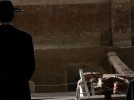Oltre la bufera
On the night of August 23, 1923, in the village of Argenta, in the province of Ferrara, Don Giovanni Minzoni, a former war fighter and decorated military chaplain, was killed by a fascist hand.
Back in the country after the war, he tries to reorganize the social and cultural life of the community, trying to aggregate the missing boys in the countryside into the old recreational area.
The socialists, led by Natale Gaiba, city councilor, openly show their contempt for the church and that priest. But when the reports seem to take the fold of understanding and collaboration, another political force, modern and unexpected, makes its entrance into history and that small Emilian country. Augusto
Maran, a rancorous teacher, also returned from the war, feels that it is the right time to bring local power in his favor, even at the cost of carrying out violent acts. Fascism is taking hold in the cities and in the countryside throughout Italy, and also in Argenta
the first riots begin, the first attacks, which lead to the killing of Christmas Gaiba. The people of the country, lost all hope, clings to the figure of Don Giovanni Minzoni, the last “right” man left in the village, the only one that could stem the destructive force of
those people in a black shirt. The parish priest responds to those vile acts with the creation of the first female cooperatives and with the construction of a theater for children. Fascism, on the other hand, tries to bring Don Minzoni to its side, offering him the
possibility of becoming a chaplain of the militia. The pure and intransigent soul to the blackmail and threats of the priest, will bring Augusto Maran and his band to a violent ending, unexpected but perhaps already written. The killing of Don Giovanni Minzoni not only stirred the conscience of the men of the time, but as a ghost continued to stir Italy for decades.
Video
- Publication date
- 08/10/2019
- Last change
- 08/10/2019

